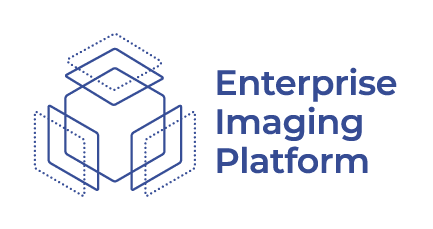Customer Case Study
Canisius Wilhelmina Ziekenhuis (CWZ),
Nijmegen
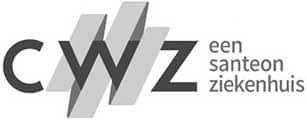
Enterprise imaging offers enormous added value for specialist and for the patient
The Canisius Wilhelmina Ziekenhuis (CWZ) in Nijmegen brought all their medical images together in one well-oiled Enterprise Imaging system. Due to the integration with the EPR, this system works quickly, securely and efficiently.
Arnaud Kruizinga
Medical IT Manager
Head of Clinical Information Technology
Project Manager
Application Coordinator
Application Coordinator
Application coordinator
Radiographer
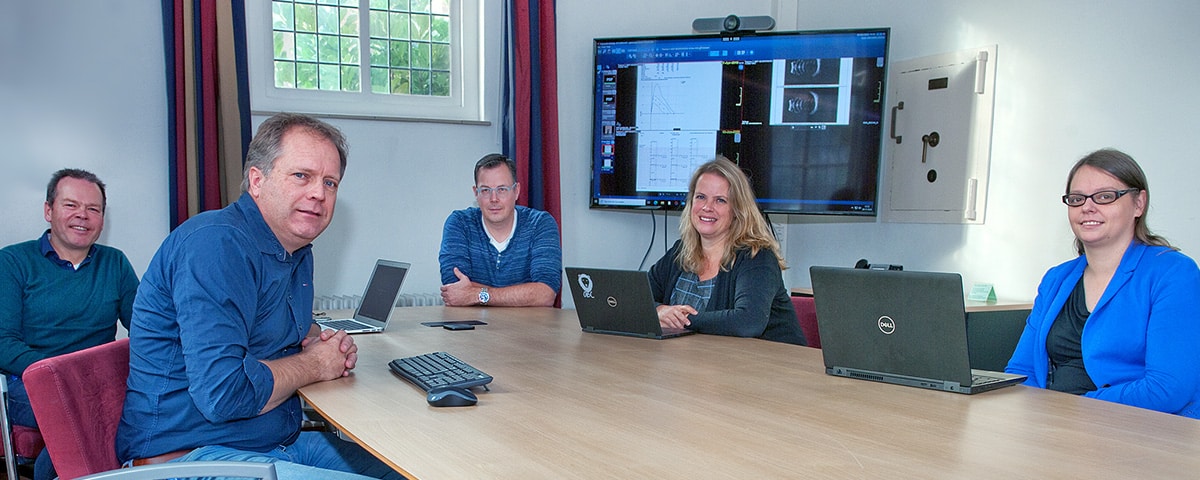
Ideal picture
“When I started here in 2017, we had two PACS systems: one for radiology, nuclear medicine and cardiology (PACS1) and a second one for images from the other departments (PACS2),” explains Barbara Michels, Head of Clinical Information Technology at CWZ Hospital in Nijmegen. “Two years later, only three departments were connected to PACS2. It simply had to go quicker than that.”
“And, I was aiming for the ideal situation – that all the specialists could request examinations and testing from within the EPR and that the orders would end up in the work lists of the departments that generate the images. After that, the images would come back to the specialist, who then makes the report in the EPR. A so-called closed order loop, which could be completely automated, EPR-driven and with as many standardized working methods as possible.”
“AGFA is a good partner for the objective we wish to achieve, namely, one viewer that supports all images. If I had to do it all over again, I would certainly choose AGFA”
One environment
Arnaud Kruizinga, Medical IT Manager, adds: “We wanted all of the images, in the broadest sense of the word, to be centralized in one consolidated environment that we could then properly manage. And, the entire system had to be less expensive.”
Based on this vision, the hospital performed a market study. “There was a minimum set of requirements. But, in particular, we wanted to hear from the suppliers how their vision would match our own,” continues Arnaud. “AGFA HealthCare, the supplier of our PACS 1 solution, turned out to be the best candidate with their completely integrated Enterprise Imaging platform.”
“During the kick-off, which took place in the summer of 2018, we agreed with AGFA HealthCare that we would assume joint responsibility for the platform. Should any problems arise – and with a project like this, there are sure to be some problems – we would solve them together.”
“It is about partnership, wanting to make it a success together. And, in my opinion, we did just that.”
About CWZ
CWZ is one of the 27 top-clinical teaching hospitals in the Netherlands. The hospital, with its main branch in Nijmegen, offers 28 medical specialisms, 8 paramedical departments and 5 urgent-care departments and IC units. Nearly 4000 employees and many volunteers provide personal care to the patients every single day.
Project Management is key to a successful project
A long-running, hospital-wide project stands or falls with the quality of the project management. On this point, Arnaud left nothing to chance. He thought it was essential to appoint an experienced project leader with excellent communication skills.
In consultation with AGFA HealthCare, the project leader then mobilized a strong core team, with three Functional Application Coordinator and a Technical Application Coordinator for the PACS-side, supplemented with a radiographer who manages the modalities and two people for the EPR. All of these people were involved in the project from Day 1. With each new implementation, key users from the departments that were being connected were also added to the core team.
“We divided the project up into eight phases, each of which lasted for three months,” explains Dirk Boef, Project Manager. “In the first phase, we made sure that the preconditions were met: The infrastructure and applications that we needed for the roll-out had to be available. The project team was also trained.”
In phase 2, the first three departments were connected. This was performed by AGFA HealthCare, and the people from our project team worked alongside AGFA. Learning by doing, so to speak, so that they could do it themselves afterwards, with the support of AGFA HealthCare. In each of the following phases, the system was rolled out in 2 or 3 departments.
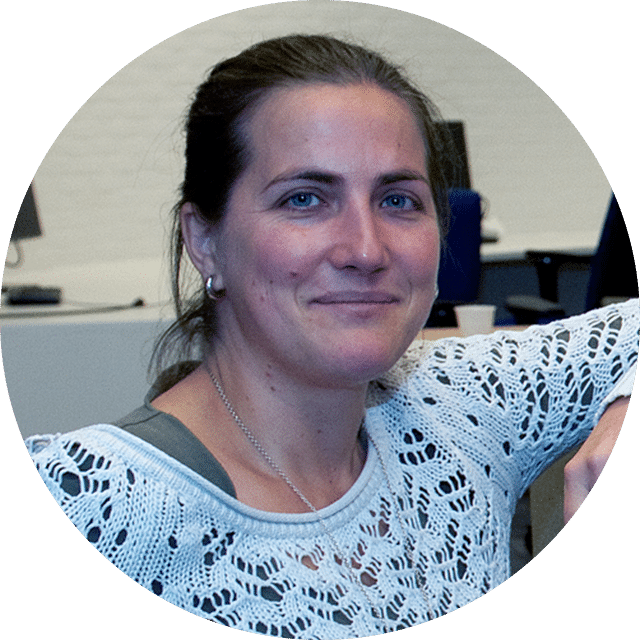
Barbara Michels
Head of Clinical Information Technology
Thorough analyses of workflows and modalities
An important challenge with every new implementation is properly defining the workflow you want to achieve per department and to integrate the modalities into this workflow. At CWZ, the closed order loop is consistently taken as the guiding principle: You send an order from within the EPR, and the images come back to the EPR, all with as few clicks as possible by the user.
“In each department, we performed an analysis based on a survey document,” says Jeroen Blankenspoor, Application Coordinator within the project team. “We look to see which devices we have and whether any extra devices are needed. Then, we decide how we will connect these devices to Enterprise Imaging and the EPR in as standardized a manner as possible – after all, an ultrasound is an ultrasound, no matter which department is using it. After that, we work out which data must be migrated, either because migration is necessary for the care provided or because it is required by law. As the last step, we write a manual and provide training.”
His colleague Astrid Bakker continues: “Making an inventory of the devices and figuring out how to convey the orders to the device and how the images can then be returned – that takes the most time. Things have to be done technically, but also functionally, both on the EPR-side as well as on the PACS-side. Sometimes, you also need the supplier of the device, because the process for transferring images is not standardized. Older medical equipment sometimes does not transfer any data at all, and then there is nothing to digitize. That is why nowadays when you purchase a new device, it must be able to provide images in DICOM format and to receive HL7 orders.”
In addition to that, security is also an important part of the analysis: Who can see the images? Some departments want to protect the images more than others. That must also be regulated, both on the PACS-side and on the EPR-side.
And then there are the emergency examinations which are accompanied by extra workflow challenges, especially on the EPR-side. How can you ensure that the orders actually end up in the Enterprise Imaging work lists? This analysis is also very important.
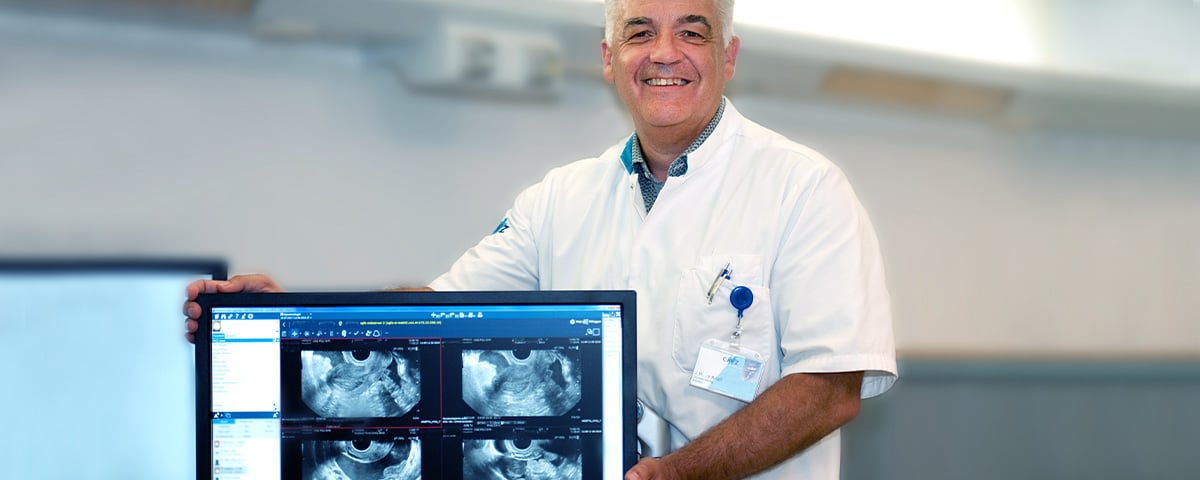
Time-savings
The greatest returns are the quality, the satisfaction of the staff and the regulatory compliance. In addition, there are optimizations that generate significant time-savings, time that can be spent on providing care to the patients. Several examples:
- In Gynecology, ultrasounds used to be printed out, labelled and scanned. Not only did this result in poor-quality images, it was also very time-consuming.
Time-savings: 2-3 minutes per examination at 20,000 examinations per year: approximately 700 work hours. - In Cardiology, the Doppler examinations used to be printed out and scanned.
Time-savings: 4 minutes per examination at 800 examinations per year: 53 work hours. - In ENT, hearing tests used to be printed out and scanned.
Time-savings: 1-2 minutes per examination at 5300 examinations per year: 130 work hours per year. - In Urology, a total of approximately 225 work hours per year are saved from the ultrasound, endoscopy and urodynamic examinations.
Short lines of communication and chain-thinking are essential
Effective cooperation within the team is and remains essential. “You need a close-knit team with both technical and functional people, a team that is very good at sparring. What’s more, including the key users from each department in the change process from the very beginning is crucial – you must ask for their input and keep them informed. Ultimately, they are the ones who will disseminate the new working method to the rest of the department, making the go-live that much easier,” explains Lauri Buijs, Technical Application Manager within the project team.
“Because we consolidated PACS1 and PACS2 together in AGFA HealthCare’s Enterprise Imaging, we now have a team that can take wide-ranging actions,” adds Dirk. “A form of chain-thinking also arose across the departments and functions as well as outside the walls of the hospital with the software and device suppliers. Given the tempo with which we aimed to connect the departments, this was extremely important. And after the roll-out, it is much easier for this collective team to respond to new requests from the departments and to develop innovations.”

Arnaud Kruizinga
Medical IT Manager
Working with the closed order loop
“One of the departments where we have set up the closed order loop is Dermatology,” Edwin van Harn, one of the team’s Functional Application Managers, tells us. “There, they took photos with a camera and these photos were saved somewhere on a network disc. Now, an order is created in the EPR. With the Capture tool from AGFA’s universal viewer, XERO, we can add the photos that were taken to the order in a simple and secure manner. That way you can link the report and the images to the actual request, and all the patient data ends up in a secure place.”
“We were also able to achieve added value quickly in the Clinical Neurophysiology Department,” explains Lauri. “One examination that I would like to single out is the duplex ultrasound. In the past, the images from that examination were printed out, glued to a piece of paper and scanned again, if needed. The act of printing and scanning them resulted in such a significant loss of depth and grey scale values that the images lost all their diagnostic value. The images were secured by burning a DVD directly from the ultrasound device that had produced the images. And this DVD ended up in a locked cabinet which was only accessible to the people in the department.
But now, because all images are managed centrally in AGFA HealthCare, all these unnecessary operations are no longer required. The measurement values, which in the past had to be manually typed out, are now automatically entered into the EPR. This saves quite a bit of time and helps prevent errors. The images and results can be retrieved together from a logical location. And, what’s more, it’s quick – so the patient’s course of treatment is not delayed.”
Especially those departments that had to wait somewhat longer and that have all kinds of work processes that are labor-intensive – they have welcomed the project team with open arms. “I am positively surprised about the enthusiasm with which this is being taken on board in the departments and about how everyone is putting their backs into achieving this. Knowledge, competency, commitment and passion from the people. I see that over and over again in all the departments,” says Dirk.
Better experience for the clinician and for the patient
In the past, everything was segregated. The images could often only be viewed by the specialist who had performed the examination and not by those who had not submitted a formal request. Or the images were located somewhere that the user thought was very logical at the time, but they could not be easily found later on.
“For the specialist, it is handy to have all the images from one patient, together with the results, stored away neatly in one system,” explains Barbara. Now they can inspect the images using the XERO Viewer that is integrated into the EPR. Not only are the images easier to locate, the whole process is just much faster.”
“According to me, it is also important from a multidisciplinary point of view. A doctor from a different department can see the examinations a patient has already undergone,” observes Lauri. “Imagine you have a lung disorder. In addition to the CT scan of your lungs, you have also had a neurological exam which may also be correlated to your symptoms.”
The opportunity to avoid double examinations is also of enormous benefit to the patient. In the past, if a cardiologist ordered the same exam as the neurologist, that would go unnoticed, but not anymore.
More secure and more manageable
“By centralizing all the medical images in one well-oiled system, everything becomes easier to manage and control. And when a system has fewer links, you can raise the overall security to a higher level while reducing the chance of errors,” continues Arnaud.
And, within the new platform, a log is automatically created of who views which images when. All measures for safeguarding the security of the platform. And because the images are now all in one place, they have a better overview of, and choice of, the retention periods for the images than they did when they were stored in many decentralized locations.
“With this system we have also created the opportunity to examine possible next steps, such as improving the exchange of images with other hospitals and care professionals in the region (via XDS), making the images accessible to patients and applying AI for decision support. Consider, for example, algorithms for COVID-19 screening, which are of great interest currently and which, of course, the hospital is already using,” adds Dirk.
“And the benefits are not only qualitative. If you look at the cost of the system, this was definitely an attractive business case. The fact that we can phase out the old systems, limit the administrative burden and agree to better conditions with the supplier means seriously positive returns for our hospital,” concludes Arnaud.
AGFA HealthCare solution
- Enterprise Imaging platform: Brings all images from all departments together in one consolidated environment.
- XERO Universal Viewer: Application that is integrated into the medical record and used by doctors to view their patients’ medical images.
- XERO Capture: Solution that allows the user to quickly and easily transfer images made with mobile devices to the Enterprise Imaging platform.
Benefits
- Fewer operations result in substantial time-savings, both for the departments that generate the images as well as for the clinicians who view the images. As a result, more patients can be helped in the same amount of time.
- Double examinations are avoided.
- Images and other patient data are easier to locate.
- Faster accessibility of the images across disciplines leads to more efficient delivery of care.
- One consolidated system is easier to manage and to control and reduces costs.
Tips for a successful transition
- Continuity within the project team:
We put together a project group with a core team that acted throughout the entire duration of the project. That way each phase can be rolled out in as standardized a manner as possible. In addition, this continuity results in less delays in general and in an environment that is easier to manage. - Key users:
With each new implementation, key users from the departments are added to the core team. We select these people far in advance and schedule their time as needed. - External parties:
We also involve the external parties in the project as early on as possible, even before we perform the analysis in the department. We tell them what we are planning to do and we make preparations, so that we can all change gears quickly later on.

Dirk Boef
Project Manager

